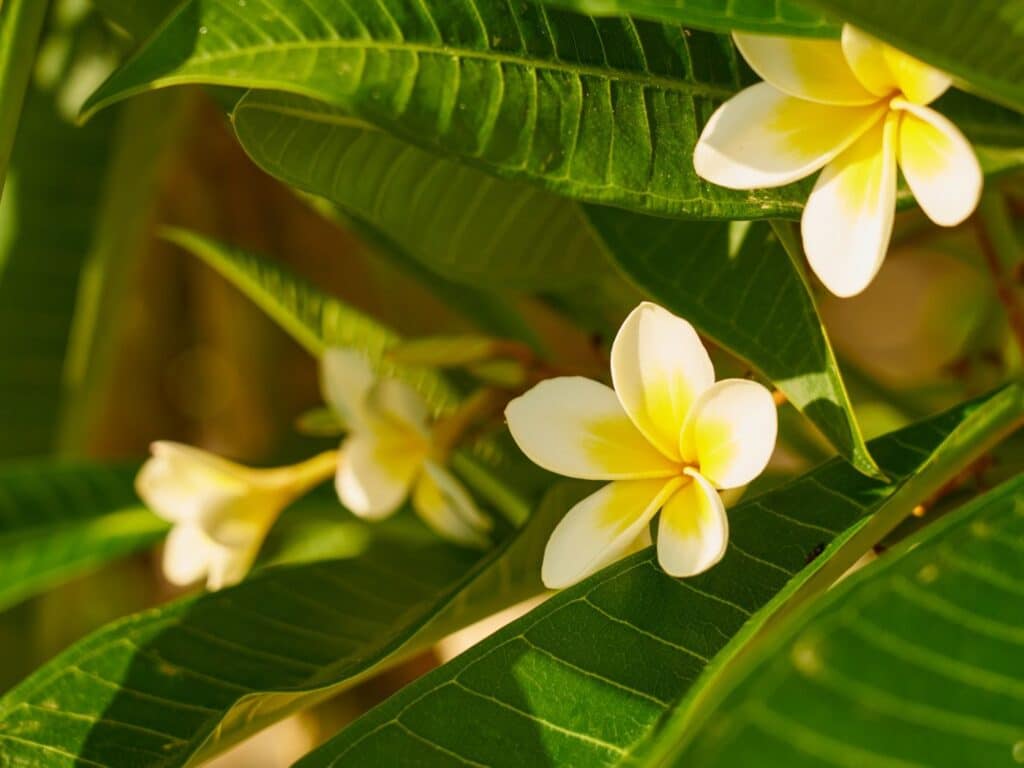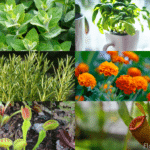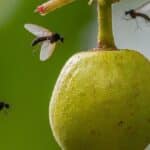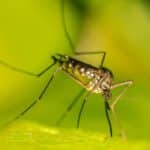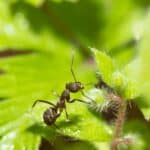When your plumeria’s leaves start to turn yellow, it can be a sign that something’s amiss in its little world. This vibrant plant, beloved for its beautiful flowers and lush foliage, can sometimes send out a distress signal in the form of yellowing leaves. Understanding the cause is the first step toward restoring your plumeria’s health and vibrancy.
Fortunately, diagnosing the issue isn’t as daunting as it may well seem. Whether it’s a watering mishap, a nutrient imbalance, or an environmental stressor, there’s usually a solution at hand. In this article, you’ll discover the common reasons behind this discoloration and learn how to address each one effectively. Let’s dive in and get your plumeria back to its thriving, colorful self.
Understanding Plumeria Leaves Turning Yellow

The Natural Life Cycle of Plumeria Leaves
Plumeria leaves turning yellow can be part of the plant’s normal growth cycle. As plumeria plants mature, older leaves may turn yellow and fall off to make way for new growth. This process is particularly evident at the start of the growing season or when the plant undergoes stress to conserve resources. Recognizing this natural cycle helps in distinguishing between typical leaf aging and more serious health issues requiring attention.
Common Varieties and Their Seasonal Responses
Different plumeria varieties exhibit varied responses to seasonal changes, which can impact leaf color. For example, some Plumeria types may well show increased leaf yellowing as they enter a dormant period in cooler months, while others may well retain their green foliage longer into the season.
Being familiar with your plumeria’s specific variety and its seasonal behavior is essential for accurate diagnosis. This knowledge ensures proactive care, preventing undue concern over natural changes and allowing for correct action if leaf yellowing signals a more problematic issue.
Identifying the Causes of Yellowing Leaves
Nutrient Deficiencies Impacting Plumeria Health
Nutrient deficiencies often manifest as yellowing leaves in plumeria plants. If your plumeria lacks essential nutrients like nitrogen, phosphorus, or potassium, the leaves may well start to yellow.
Lack of nitrogen, for example, directly affects the foliage, turning it a lighter shade. Conversely, potassium deficiency leads to yellowing at the edges and tips.
To address this, consider using a plumeria flower fertilizer with a low first number (nitrogen content) to promote more compact growth.
Watering Issues: Overwatering and Underwatering
Getting the watering right is crucial for plumeria health. Overwatering is a common mistake that leads to yellow, dropping leaves, signaling root rot. If the soil doesn’t dry out between waterings, you’re probably giving your plant too much to drink.
Conversely, underwatering can also cause leaves to yellow and wilt because the plant isn’t getting enough moisture to sustain itself. Check the soil’s moisture level before watering to avoid these issues.
Environmental Factors: Temperature and Sunlight
Temperature and sunlight profoundly influence plumeria health. These tropical plants thrive in warm environments and plenty of sunlight. If temperatures drop too low or if your plant lacks sunlight, the leaves may well turn yellow as a stress response.
Plumeria plants prefer temperatures between 65°F and 85°F. Also, they need at least six hours of sunlight daily to maintain vibrant foliage. If you notice yellowing, evaluate your plant’s location and consider moving it to a sunnier spot or providing additional warmth during cooler months.
Addressing Plumeria Yellow Leaves
Addressing plumeria yellow leaves involves fine-tuning your care routine to meet the specific needs of your plant. The causes range from environmental to nutritional, but don’t worry. By tweaking a few aspects of how you care for your plumeria, you can get those green leaves flourishing again.
Adjusting Your Watering Routine
Getting your watering routine just right is like hitting the sweet spot in a game of tennis. Too much or too little, and your plumeria isn’t happy. If you’re overwatering, let the soil dry out a bit before giving more water. For those underwatering, a consistent schedule is key. Aim to keep the soil evenly moist, not drenched. Checking the soil moisture before watering helps avoid guesswork—your plumeria will thank you.
Correcting Soil Nutrient Imbalances
Nutrient imbalances are the diet problems of the plumeria world. If your plant’s leaves are turning yellow, it may well be screaming for a balanced meal. A high-quality fertilizer with a mix of essential nutrients, applied during the growing season, can work wonders.
Regular checks for pH levels in the soil also ensure that your plumeria is absorbing these nutrients efficiently. This step is like making sure its plate isn’t just full, but full of the right stuff.
Optimizing Light Exposure and Temperature Conditions
Plumerias love the spotlight, but just like us, they have their limits. Ideal light and temperature are their version of a perfect day outside. Ensure your plumeria gets at least six hours of sunlight daily. However, if you’re in a particularly hot climate, some afternoon shade won’t hurt.
Temperature-wise, they thrive in the warmth but need protection when the thermometer dips below 50°F. Moving your plant to a sunny spot indoors during colder months can keep it healthy and happy.
Preventative Measures for Healthy Plumeria
The Importance of Proper Soil Mix
Choosing the right soil mix for your plumeria is crucial, acting as the foundation of your plant’s health. A well-draining soil mix prevents water from pooling around the roots, reducing the risk of root rot.
For best results, opt for a mix specifically designed for plumerias or succulents. This ensures your plant gets the perfect balance of moisture and air flow, keeping those leaves green and vibrant.
Regular Monitoring and Maintenance Tips
Consistency is key in keeping your plumeria thriving. Regularly check the soil’s moisture level; it should feel dry about an inch deep before watering again. Adjust your watering schedule based on the season—less in winter, more in summer.
Additionally, keep an eye on the leaves for any signs of distress, including yellowing or spotting, which could indicate watering issues or pest problems. A consistent routine of checking and adjusting care for your plumeria can prevent yellow leaves and promote healthy growth. Remember, a little attention goes a long way in maintaining the beauty of your plumeria.
Frequently Asked Questions
What causes yellowing leaves in plumeria plants?
Yellowing leaves in plumeria plants can be caused by a variety of factors including inadequate watering, nutrient imbalances, environmental stress, and poor soil conditions. Understanding seasonal responses and adjusting care routines accordingly is essential for preventing this issue.
How can I prevent my plumeria plant’s leaves from turning yellow?
Preventing yellowing leaves in plumeria plants involves ensuring proper watering, maintaining a balanced nutrient profile, using the right soil mix to avoid root rot, and regularly monitoring the plant for signs of stress. Adjusting care routines to match seasonal changes is also crucial.
What kind of soil should I use for my plumeria plant?
For plumeria plants, it is important to use a well-draining soil mix that prevents root rot while retaining enough moisture to support healthy growth. A mix specifically designed for succulents or cacti can be a good option, but ensuring it’s enriched with the right nutrients is key.
How often should I water my plumeria plant?
Watering schedules for plumeria plants should be adjusted based on the season. During warmer, active growth periods, more frequent watering is required, whereas in cooler dormancy periods, watering should be reduced. Always check the soil’s moisture level before watering to avoid overwatering.
What should I do if I notice the leaves of my plumeria turning yellow?
If you notice yellowing leaves on your plumeria, first assess and adjust your watering routine and check the soil’s condition. It may also be beneficial to review the nutrient balance and adjust fertilization. Monitoring the plant closely for further signs of distress and addressing issues promptly can help restore its health.
Learn more about Plumeria’s flower symbolism to see why people love this plant!
See more: Vinca Leaves Turning Yellow? Care Tips for Vibrant Growth

